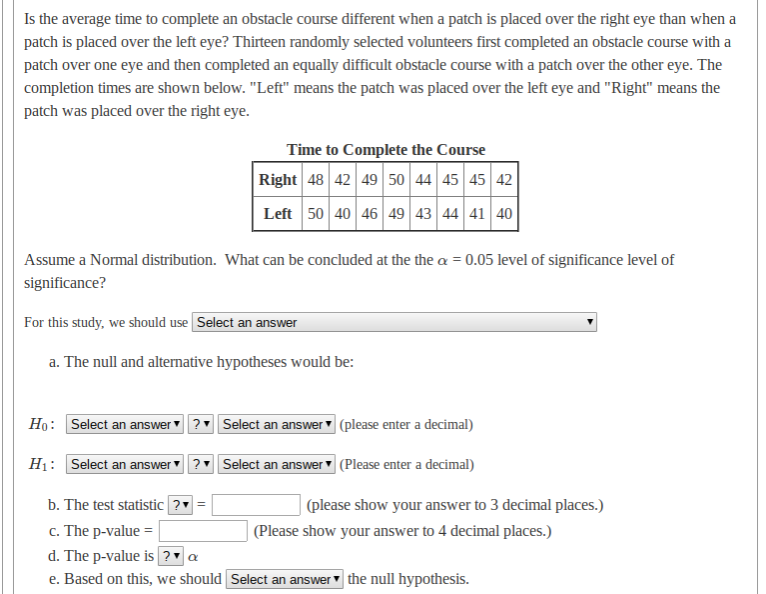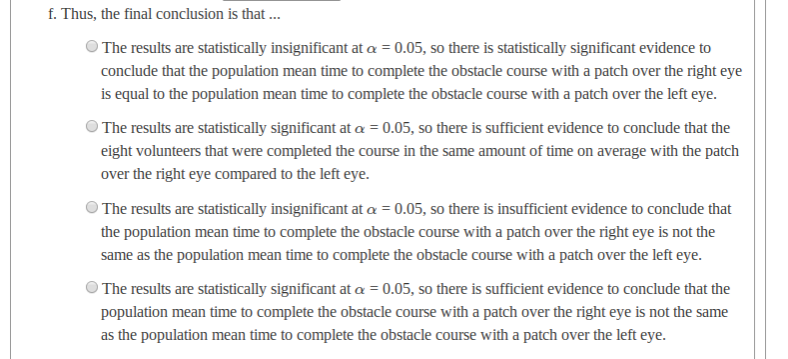Is the average time to complete an obstacle course different when a patch is placed over the right eye than when a patch is placed over the left eye? Thirteen randomly selected volunteers first completed an obstacle course with a patch over one eye and then completed an equally difficult obstacle course with a patch over the other eye. The completion times are shown below. "Left" means the patch was placed over the left eye and "Right" means the patch was placed over the right eye. Time to Complete the Course Right 48 42 49 50 44 45 45 42 Left 50 40 46 49 43 44 41 40 Assume a Normal distribution. What can be concluded at the the a = 0.05 level of significance level of significance? For this study, we should use Select an answer a. The null and alternative hypotheses would be: Họ: Select an answer ? Select an answer " (please enter a decimal) Hị: Select an answer ? Select an answer (Please enter a decimal) b. The test statistic ? c. The p-value = d. The p-value is ? a e. Based on this, we should Select an answer the null hypothesis. (please show your answer to 3 decimal places.) | (Please show your answer to 4 decimal places.)
Contingency Table
A contingency table can be defined as the visual representation of the relationship between two or more categorical variables that can be evaluated and registered. It is a categorical version of the scatterplot, which is used to investigate the linear relationship between two variables. A contingency table is indeed a type of frequency distribution table that displays two variables at the same time.
Binomial Distribution
Binomial is an algebraic expression of the sum or the difference of two terms. Before knowing about binomial distribution, we must know about the binomial theorem.
Is the average time to complete an obstacle course different when a patch is placed over the right eye than when a patch is placed over the left eye? Thirteen randomly selected volunteers first completed an obstacle course with a patch over one eye and then completed an equally difficult obstacle course with a patch over the other eye. The completion times are shown below. "Left" means the patch was placed over the left eye and "Right" means the patch was placed over the right eye.


For the given data on course completion time with patches for right and left eyes, since the same volunteers are used for both the courses, a paired t-test for difference of means will be used to test whether there is any difference between the two samples.
Let the difference between the two sample values be denoted by:
Level of significance is:
The hypothesis to be tested are:
Using Excel to perform the test:
- Input the data in spreadsheet
- Go to Data tab > Data Analysis > t-test: Paired two sample for means
- Input the range for the two variables, and level of significance = 0.05 > Click OK
Trending now
This is a popular solution!
Step by step
Solved in 2 steps with 1 images






